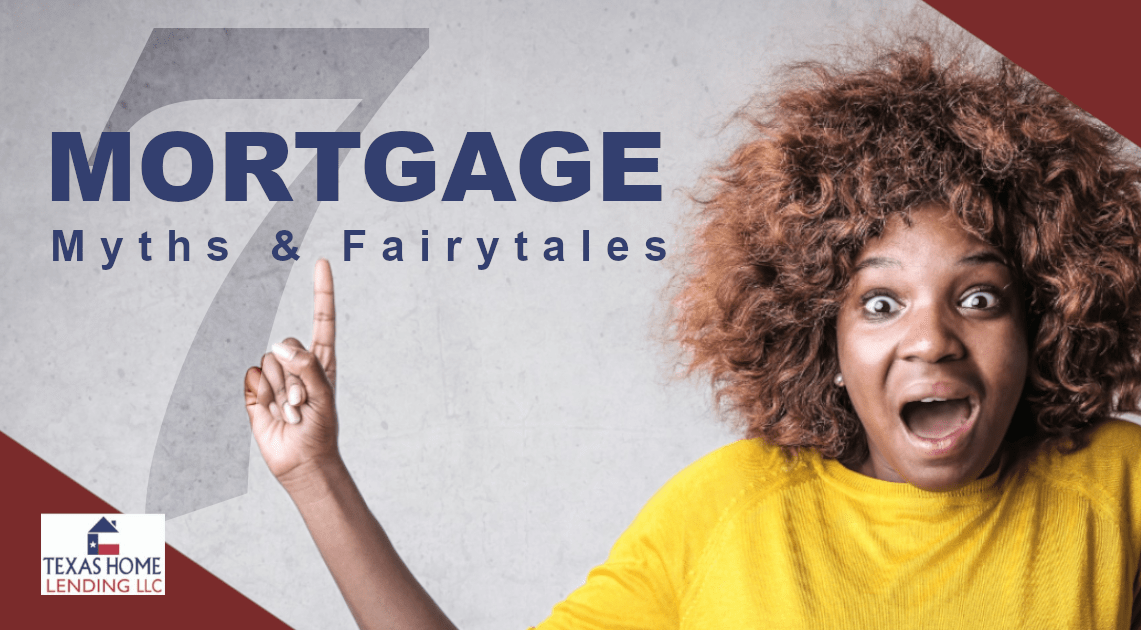Mortgage Myths and Fairytales
7 Common Mortgage Beliefs And Why They Are Wrong
If you are someone confused about the mortgage process, here we’ll tackle common mortgage myths and bring you accurate advice about it.
Buying a home for the first time can be an overwhelming process because there is a great deal of misconception around it. Here are the most common mortgage myths and fairytales, debunked!
1. Low Mortgage Rates Mean You Should Buy a Home ASAP
Even though the low rates mean affording an expensive home and paying less per month, don’t let this mortgage myth make you a big financial mistake.
Low rates have pushed the home prices up by 19% this year, and you’ll end up overpaying for a home just because rates are low. It doesn’t mean to rush for a home purchase just because the internal rates are low.
Experts are predicting that rates will increase this year, with an average of 3.7% by the end of 2022. While this prediction may make a home purchase more attractive now, the reality is that rates have been decreasing for decades.
Even if you get a higher rate, you can refinance your mortgage to a lower rate in the future.
2. You Need a 20% Down Payment
Even though putting a large down payment has its benefits, such as having more equity, qualifying for a lower rate in the future, and avoiding private mortgage insurance (PMI), it is not always required to pay 20% in down payment.
If you have a good credit score, FHA loans require only 3.5% down payment. VA and USDA loans don’t require a down payment at all, and some conventional loans will require as little as 3%.
You can also consider down payment assistance programs administered by state or local governments.

3. You Need a Higher Credit Score for Pre-Approval
Having a higher credit score enables you to access more loan programs with better interest rates, but you don’t need a top score to become a homeowner. If you have a low credit score, you still have options for a mortgage pre-approval.
Your credit score is directly related to the requirements of the loan program. You just need to find a program that works for your current credit score. Most programs require 640 as a minimum score, but you can use our specialized tools to achieve your homeownership goals.
4. 30-Year Fixed-Rate is Always the Best Options
You might have heard that a 30-year fixed rate is the best option. But it actually depends on your financial situation and how much you are willing to bet on changing market conditions.
More than 70% of the borrowers go for a 30-year fixed rate because of low monthly payments. But other options may be suitable for you depending on your financial goals.
No one knows where the lending market will be in future. If you can afford to pay higher monthly payments, a 15-year fixed can help you own your home in less time. Shorter-term mortgage programs also tend to have lower interest rates comparatively.
An adjustable mortgage rate (AMR) can be another option if you plan on selling your home in the near future. The interest rate will be fixed for a time before it becomes adjustable. However, it starts to increase after the adjustment. So, it is one of the mortgage myths that you need to be aware of.
5. Renting is Better Than Buying
Most of the time, this is not true. To work out a fair comparison, you’ll have to include your total rental costs. Then, compare that with the monthly mortgage cost of the homes within your budget. You will have to factor in your home’s equity with each payment, compared with rental installments, which have no ROI.
Unless you’re saving a considerable sum renting compared to purchasing, counting in the home equity you are building, and wanting to invest the difference, you will get more ROI with a home purchase.
6. Refinancing Mortgage is Not Worth It
For borrowers, the idea of going through the mortgage application process once again can be stressful. In any case, the refinancing tells whether it’s a good time to refinance.
Bringing down your interest rate by 0.5 to 1% can save you a lot. According to analytics company Black Knight, some borrowers could save up to $500 every month by reducing the rate by 0.75%, which means saving $6,000 per year.
Decreasing your loan term, consolidating debt, or cashing out equity out of your home to pay for repairs are different motivations to think about a refinance.
7. Lowest Interest Rate is Always the Better Option
Your interest rate plays a significant role in deciding the cost of your mortgage; however, it’s not the only element. Lenders can impose different expenses, like originating charges. You also need to consider closing costs, which can go from 2 to 5 percent of your loan amount.
Applying to multiple lenders and comparing their estimated rates is a more reliable technique to compare mortgage options and settle on the best one for you. Lenders send this estimate to you after the completion of your application. Since they’re prepared using a standardized format, you’ll have the option to think about various options against one another without any problem.
You don’t need to stress over multiple applications impacting your credit score because most credit bureaus count multiple applications for a similar type of credit within a specific time as a single inquiry.
Now that you are aware of these common mortgage myths, you are ready to start your home purchase process with ease. You should never fall for these because they can cause you long-term financial damage depending upon your situation.
Our team of experts can help you get started on your home buying journey. You can seek free consultation here.








